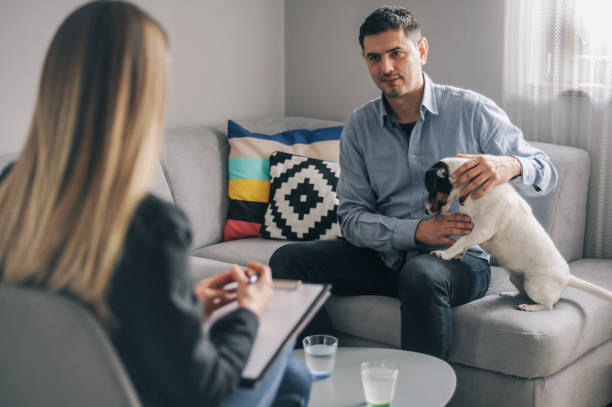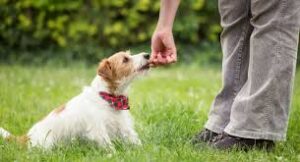In recent years, therapy dogs have moved beyond hospitals and school hallways—they’re now enriching mental health environments, supporting both practitioners and clients alike. At Alaska Dog Works’ Dogs Assisting with Grace (DAWGS) program, under the leadership of Michele Forto and her team, this integration is both strategic and deeply human-centered.
The DAWGS Program: Purpose, Structure & Leadership
Dogs Assisting with Grace is Alaska Dog Works’ signature therapy dog initiative. Led by Michele Forto, who holds certification as a canine trainer along with a master’s in strategic coaching, DAWGS offers customized training that blends behavioral science, human development, and handler coaching.
Michele’s background includes a kinesiology degree from the University of Alaska Anchorage and advanced coaching training, making her uniquely qualified to craft programs that support both dogs and their human partners. Under her leadership, therapy teams are trained not only for obedience but for adaptability, resilience, and therapeutic presence in real-world clinical settings at Alaska Dog Works.
What Makes a Dog a Good Fit for Psychological Settings?
Therapy dogs destined for counseling rooms must exhibit exceptional composure. Alaska Dog Works evaluates dogs on:
- Calm under stress: ability to remain centered even during emotional moments
- Focus and reliability: following cues even when distractions arise
- Social ease: interacting gently and confidently with new people and settings
Each team’s program is tailored: whether the dog is beginning training from scratch or being prepared for certification, handlers work through simulated clinic scenarios, such as rooms with chairs, lighting, soft sounds, or occasional tears, so the animal and handler are ready to serve in dynamic environments.
How Therapy Dogs Support Psychologists and Counselors
Creating Immediate Calm
Upon entering a session, clients often feel tension, anxiety, or grief. The presence of a calm, trained therapy dog can lower physiological markers, heart rate, and cortisol levels, and offer non-judgmental companionship. Research supports that touch and petting promote oxytocin release, enhancing safety and emotional access.
For clinicians, therapy dogs can help establish therapeutic rapport more rapidly. When a client reaches out to a pet or simply observes, it can open a pathway to vulnerability that words alone may not achieve.
A Bridge to Emotional Processing
Clients who find it difficult to speak openly, children, trauma survivors, individuals with social anxiety, can communicate through interaction with the dog: stroking, observing posture, even light play can become metaphors. The dog’s reaction (e.g., leaning in, offering a paw) can reflect themes of trust, rejection, closeness, or autonomy.
This non-verbal dialogue is particularly valuable for somatic therapies and trauma work, allowing clients to explore feelings in a contained, embodied way.
Supporting Therapist Self-Care
Therapy work is emotionally intense. Long days of empathic engagement can lead to compassion fatigue or burnout. Having a therapy dog present offers relief: moments to reset, focus inward, or simply breathe. The dog functions as a living reminder to cultivate presence, boundaries, and self-regulation.
Clinicians often find that sessions with a therapy dog also re-energize them in between clients, offering small but meaningful restorative interludes throughout the workday.
Inside the DAWGS Training Journey
At Alaska Dog Works, DAWGS training is far from perfunctory obedience drills. Here’s how it unfolds:
Handler & Environmental Assessment
Before a dog ever visits a counseling office, Michele’s team assesses the handler’s comfort level, learning style, and intended clinical setting (e.g., private practice, school setting, hospital). Dogs are observed in group classes, public places, and simulated sessions to gauge readiness.
Realistic Exposure Training
Beyond classrooms, dogs practice in office-like environments, where they experience therapy chairs, soft sobbing sounds, file cabinet noises, and interrupted phone signals. Handlers learn to cue their dog gracefully, even when emotionally engaged, anchoring therapeutic presence through trained responses.
Behavioral Science Meets Coaching
Michele combines canine behavior protocols with human coaching skills. Handlers learn not only to train commands but to observe body language, manage energetic shifts, and maintain their emotional clarity during sessions. The result: a handler‑dog partnership that can support emotional change while staying regulated and present.
Certification and Ongoing Support
Upon completing the program, teams can pursue formal therapy dog certification through national organizations. Even after certification, clients continue to receive coaching and support from Alaska Dog Works, reinforcing skills and ensuring consistent performance in therapeutic roles.
Stories from the Counseling Room
Real-world deployment of DAWGS teams speaks volumes.
- School therapists using dogs report quicker engagement with reluctant students; students who previously avoided sessions now willingly attend, in part to spend time with “the dog friend.”
- Community mental health clinics have seen reduced session cancellations when clients know a therapy team is present, especially for individuals coping with depression or PTSD.
- Private practices using dogs report more reflective, slower speech patterns from clients, allowing deeper exploration in fewer sessions.
These outcomes align with broader findings: clients describe therapy dogs as calming, emotionally supportive, and even motivating for sessions that previously felt overwhelming or inaccessible.
Key Benefits: Therapist & Client
Stakeholder | Primary Benefits |
Client | Emotional grounding, rapport building, non‑verbal expression |
Therapist | Enhanced therapeutic alliance, model of self-regulation, emotional pacing cues |
Setting | Calming treatment environment, reduced anxiety, and adaptability to diverse needs |
Therapy dogs don’t replace psychological interventions; they amplify them. By offering normalizing companionship and embodied safety, dogs deepen the trust and flow in therapeutic dialogue.
Guidelines & Best Practices
To safely and ethically integrate therapy dogs into counseling settings, Alaska Dog Works emphasizes:
- Informed consent: Clients are informed in advance and can opt out.
- Allergy/sensitivity screening: Ensuring selected clients are comfortable and safe.
- Clear boundaries: Within sessions, clients understand when it’s okay to engage and when rest or quiet cues are in place.
- Handler accountability: The handler keeps the dog under control, maintains hygiene, and manages emotional transitions.
- Dog well-being checks: Regular rest breaks, hydration, and rotation, so dogs aren’t overworked or stressed.
These guidelines support both ethical best practice and therapeutic effectiveness, ensuring the dog is a partner, not a distraction.
Why Trust Alaska Dog Works & Michele Forto
- Expert leadership: Michele Forto has over two decades of experience training therapy and service dogs across North America, bringing rigorous techniques informed by behavioral science and strategic coaching.
- Ethical training philosophy: Alaska Dog Works emphasizes positive reinforcement, handler empowerment, and realistic preparation, not simply rote obedience.
- Real‑world preparation: Dogs trained through DAWGS serve in hospitals, dental offices, schools, therapist offices, and community settings, each requiring high degrees of adaptability and professionalism.
- Ongoing support: The team doesn’t simply train and walk away; they offer follow-up coaching and strategy support to refine performance over time.
Getting Started: Could DAWGS Fit Your Practice?
If you’re a psychologist, counselor, therapist, or clinician curious about adding a therapy dog to your practice, here are key questions to ask:
- Is your current practice environment dog-friendly (space, surfaces, allergen controls)?
- Do you have a dog with the right temperament, calm, people-focused, and adaptable?
- Are you ready to invest in handler training, real-world exposure, and coaching?
- How would a therapy dog reinforce your therapeutic modality or goals?
When these elements align, DAWGS offers a structured path: from assessment to training to certification to integration, guiding you every step of the way.
Are you ready to explore how a therapy dog team could transform your counseling practice?
Schedule a free strategy call with Michele Forto and her DAWGS team. In this call, you will:
- Assess your current goals and environment.
- Evaluate your dog’s readiness or ideal temperament.
- Learn about training timelines, costs, and the certification process.
- Get personalized coaching on how therapy dogs can augment your mental‑health work.
Take the first step today: visit alaskadogworks.com or call 206-752-DOGS to schedule your strategy conversation and discover whether DAWGS is the right fit for your practice and mission.
In Summary
Therapy dogs bring depth, warmth, and connection into counseling rooms. Under Michele Forto’s leadership, Alaska Dog Works’ DAWGS program combines canine competence with human coaching, equipping handler-dog teams to support clients emotionally and ethically in real therapeutic work.
When trained thoughtfully, therapy dogs help:
- Accelerate trust and emotional rapport
- Offer non-verbal avenues for processing
- Support clinician energy and resilience
- Create calm, safe, adaptive therapy environments
If you’re ready to consider a therapy dog as part of your clinical practice, Alaska Dog Works stands ready to design your pathway, from assessment to certification and beyond. Schedule your free strategy call today and take the first step toward deeply enhanced therapy for both you and your clients.










